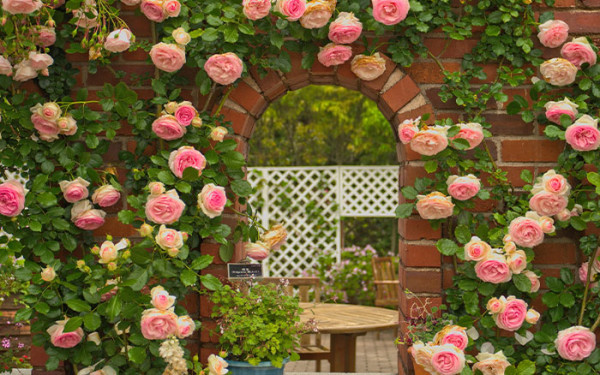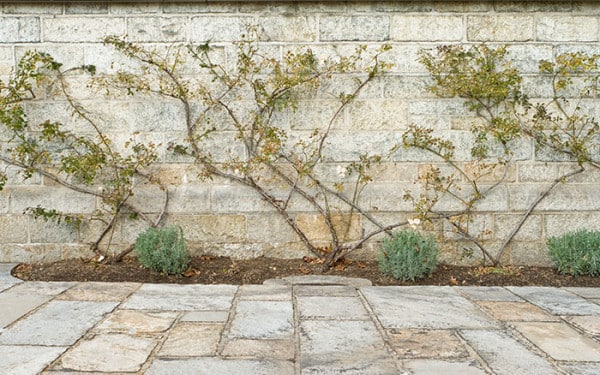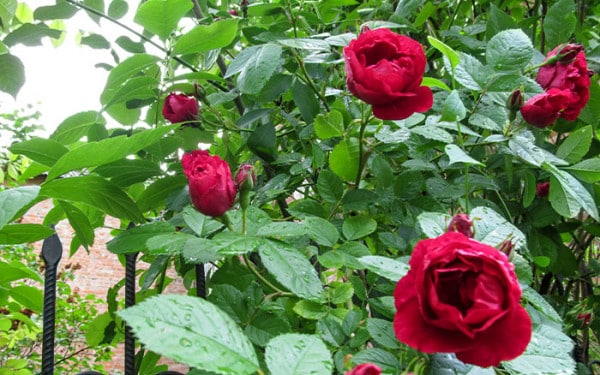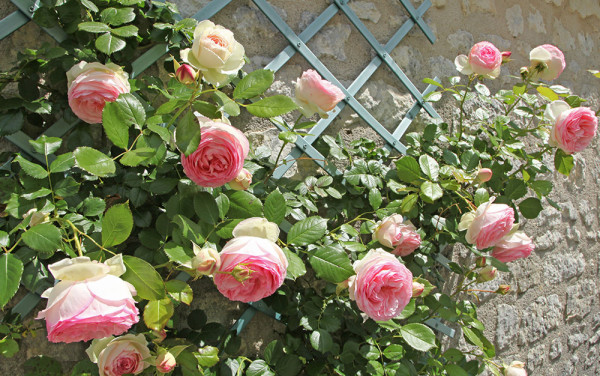Climbing and rambling roses have a stunning effect in the garden, and with the right care, they will thrive. Don’t be daunted by the care, instead use this guide to see just how straightforward it is to train climbing roses.
The difference between climbing and rambling roses
First, it’s important to know the difference between climbing and rambling roses. Climbers generally have big flowers, stiff growth, repeat flower and are not too vigorous. This makes them a great choice for growing up walls, fences, and arches.
Rambling roses usually have small flowers, don’t repeat flower, and have more flexible stems. These are ideal for growing up pergolas and into trees. However, for one to grow up a wall or fence there are some good repeat flowering ramblers like ‘Paul’s Scarlet’.

How to train
When training, the aim is to fan the stems on the plant out as much as possible. This encourages more side shoots, therefore producing a greater number of flowers.
The good news is this can be done at any time of the year.

How best to attach to the wall
The usual method is to attach a wood trellis to the wall or fence onto which you then tie in the fanned out rose stems.
Another way is to strain wires horizontally about 18” (45cm) apart and fix to the wall using vine eyes and tensioners. These can be bought from DIY stores and garden centres.
An even simpler method is to screw onto the wall rust proof screws at regular intervals and tie the rose stems onto the screws using twine or other types of string. Bear in mind to not use wire as this can cut into the stems as the plant stem grows and expands.
As well as being rust proof, the screws need to be at least 3” (8cm) long. They should be screwed into the mortar between the bricks rather than the actual bricks.

Choose the best variety
It’s important to choose right vigour of variety for the size of the space you want to cover. Don’t be too impatient for it to grow quickly, because a tall, fast growing rose can soon become a menace as it romps away out of your reach.
Another issue with very quick, tall growing varieties is that they won’t produce as many flowers for you. The reason for this is you’ll have to keep cutting it back to contain it within the space available.
Some climbing varieties like ‘Compassion’ have very stiff growth making them more difficult to fan out. In that case keep the plant in an upright position where it doesn’t need a lot of width to cover either side.
Summer
If your climber/rambler is producing great long shoots during the summer months, it’s ideal to tie them in so they don’t break in the wind.

With these top tips, you’ll have climbing roses that are thriving on your walls, fences, pergolas, and arches. They have so much to offer with their flowers, foliage, and fragrance, so ensure the roses are trained well to help them grow their best.
David Domoney is a Chartered Horticulturalist, Broadcaster, and Author. David has worked with a number of the UK’s leading garden retailers as a plant buyer and strategic consultant. With more than 30 years experience, in horticulture, David is as passionate about plants now as he was when he bought his first plant at a village fete.







Leave A Comment